Best
Banjo for
Beginners
-
Overall: Sturdy composite rim and maple neck
-
Best Feature: Highlighted by a rosewood fingerboard and remo head
-
TedScore™: 9/10
Best
Banjo for Intermediates
-
Overall: Laminated mahogany body and matte neck finish
-
Best Feature: Immaculately built with nickel plated hardware
-
TedScore™: 9/10
Best
Banjo for Professional
Goodtime Banjo EXCELLENT AND WELL RESPECTED BANJO
-
Overall: Designed with slender neck and a 22-fret fingerboard
-
Best Feature: Meticulously crafted with maple resonator and a steel rim
-
TedScore™: 9/10
Discovering how to play 5-string banjo chords felt like opening a door to a fascinating musical universe. With each pluck of the string, it was as if I had been invited to a vibrant party where everyone communicated through the harmonious tones of bluegrass music.
I quickly learned that practice is the golden ticket to becoming a banjo bard. Like the G chord – it’s the bread and butter of banjo tunes and where the merry journey begins.
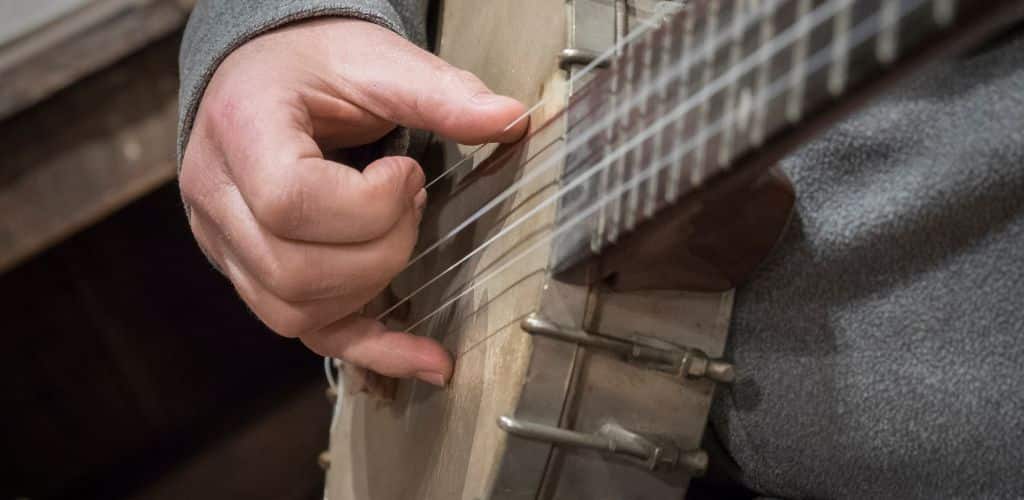
Whether you’re a beginner aiming to play music or want to add some twang to your songs, learning the 5-string banjo chords is the first step on an exciting journey.
So, keep reading, by this end, you’ll be playing with enthusiasm and style!
Chords and Progressions
Learning to play the 5-string banjo is like going on a fun adventure.
I’ll take you through the essentials, from mastering the basic banjo chord chart to weaving chord progression that forms the backbone of so many songs.
Major and Minor Chords

Major chords on the banjo bring a bright, cheerful sound to any tune. They comprise the root note, the major third, and the perfect fifth.
On the other hand, minor chords have a root, a minor third, and a perfect fifth, giving a tune that reflective, often melancholic mood.
Think of the difference, like rays of sunshine for major chords and a bit of cloud cover for minor chords.
For example, a G major chord, often called a G chord, comprises G, B, and D notes.
If I want to play an E minor chord, I’ll be strumming E, G, and B. Adding more flavor to the mix, 7th chords toss an extra note into the basic triad—these fellas add a bit of complexity and depth to the music.
Chord Diagram and Charts
Chord diagrams have been my trusty guides; they’re little maps showing me where to place my fingers on the banjo’s fretboard.
Typically, each diagram represents the banjo’s neck from a bird’s-eye view, with vertical lines as strings and horizontal ones as frets. A spot marked on a line denotes where my finger should press down, and open strings are often free game—just let them ring out.
A chord chart is my bigger picture plan, like a treasure map listing the chords in various keys.

It’ll show different chord shape for banjos in standard G tuning: DGBD for strings 4 to 1 and the high G for the 5th string, which, funnily enough, only joins in from the 5th fret.
The middle finger is often used to pluck the fifth string when playing the banjo, producing a distinctive twang in many bluegrass and folk tunes.
The index finger and ring finger are commonly employed to pick individual strings, creating melodic patterns and intricate rhythms.
For example, placing the index finger on the second fret while using the middle finger to pluck the fifth string can produce a resonant and vibrant sound, adding depth to the music.
Playing in Different Keys
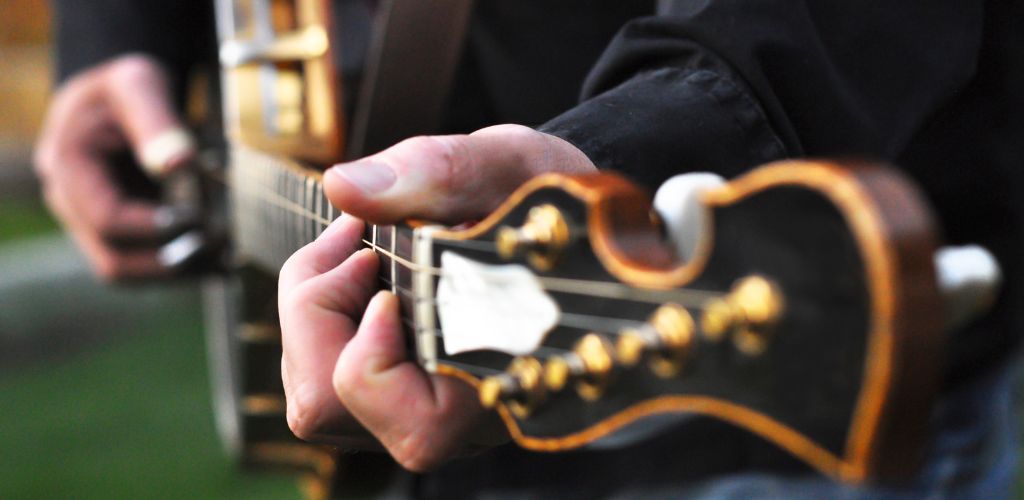
Swapping keys on the banjo is a bit like changing scenes in a play. The seven keys—F, C, G, D, A, E, and B—allow me to play tunes to fit any mood or singer’s range.
The fundamental shapes remain the same, but I’ll capo up the neck to shift into higher keys or use different fingerings to change from one key to the next.
In Western music, many ride on the I, IV, and V chords—the first, fourth, and fifth notes of any key.
So, if I’m in the key of C, my I chord is a C chord, IV is an F chord, and V is a G chord. The magic happens when I progress from one to another, crafting sequences that drive songs and keep my toes tapping.
Playing Techniques and Styles

Exploring various techniques and styles elevates my 5-string banjo play to new heights. It’s exciting to see how the classic sounds of Scruggs and Trischka have shaped the instrument’s versatility across genres.
Scruggs and Trischka Styles

I find it fascinating how the Scruggs style has defined bluegrass banjo with its signature rolling fingerpicking patterns.
Earl Scruggs revolutionized bluegrass with his three-finger picking technique, a style I often practice to get those fast-paced, syncopated rhythms that make toes tap.
Tony Trischka, on the other hand, brings a more experimental approach, blending traditional sounds with contemporary influences, truly a pleasure for those with an adventurous musical palette.
Incorporating Chord Inversions

Chord inversions are a nifty trick on my banjo, making melodies more intriguing and harmonically rich. By adjusting the order of notes, I can play the same chord differently, giving my tunes a fresh twist.
Exploring Genres with Banjo Chords

Banjo chords offer me a passport to a world of music genres; they’re not just for bluegrass. Who said a banjo can’t rock?
With a splash of rock, the twang of country, the soul of blues, or the homeliness of folk, my 5-string banjo takes on a chameleon-like ability that always surprises.
Advanced Chord Progressions

Once the basics are down, I love diving into more advanced chord progressions. The I-IV-V and mixtures of minor and 7th chords provide me with a rich palette to create compelling musical stories.
Playing around with these advanced progressions is like adding spices to a dish—it enhances everything beautifully.
Fundamentals of 5-String Banjo
Exploring the world of the 5-string banjo is exciting; it’s a special instrument with a lot of history and musical possibilities.
Here, we’ll look at the banjo itself, how to tune it, and the important first steps in placing your fingers.
Banjo Basics
The 5-string banjo, known for its twangy voice, is a folk and bluegrass music staple.
It has five strings named, from the shortest to the longest, G, D, G, B, D, with the fifth ‘G’ string being the highest pitch, unlike other strings’ sequential order.
Understanding Tuning
Getting your banjo in tune is the first step to making good music.
The most common tuning is Open G, or GDGBD, where the open strings form a G major chord, which sets the stage for many songs. There’s also Standard C tuning (CBD), which adds versatility to your play.
Fingering Techniques
Discovering essential chords and their fingerings is a thrilling part of the learning curve. Beginners should start with major and minor chords, and a metronome will be your best mate for practice; it’ll keep you honest with timing.
Remember, patience and consistent practice pave the way for mastery.
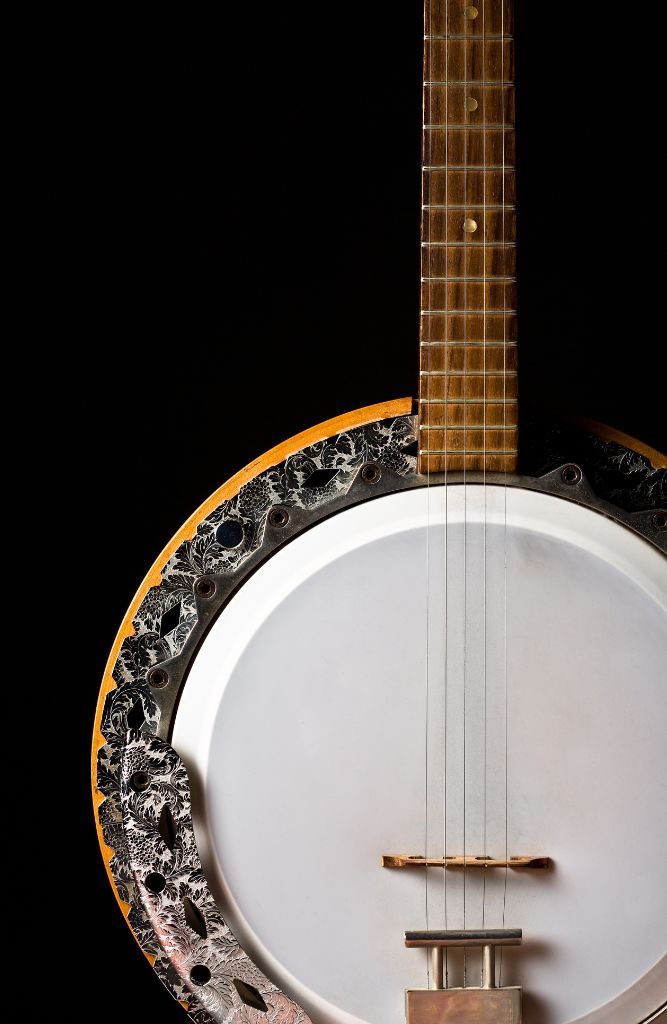
Beloved Banjo Brands
Gold Tone
Gold Tone offers a diverse range of banjos that cater to all play styles and skill levels.
I am thoroughly impressed with the Gold Tone banjo due to its remarkable playability, wide tonal range, and robust construction.
I appreciate their innovative designs and consider them an excellent value-for-money option, balancing cost with quality.
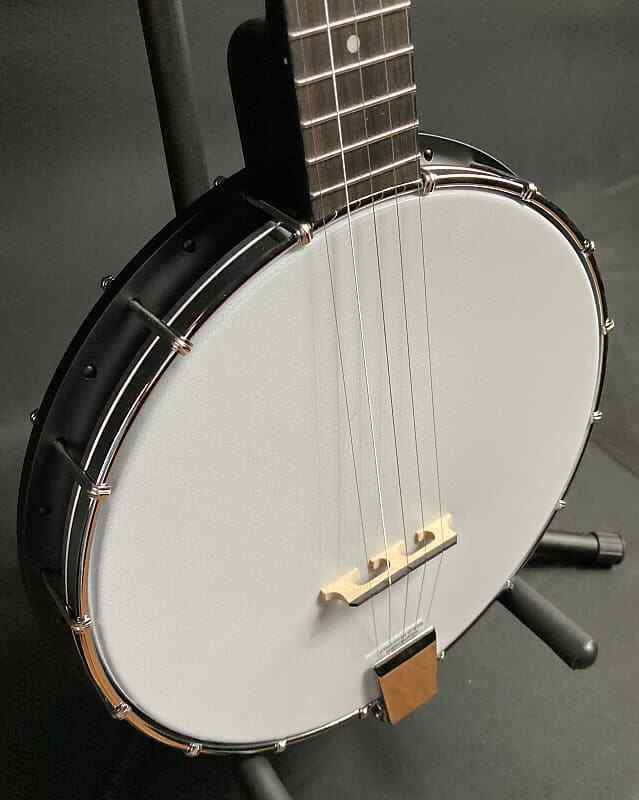
Gold Tone AC-1 5 String Openback Banjo

FEATURES: Sturdy composite rim and maple neck
OTHER INFO: Highlighted by a rosewood fingerboard and remo head
- High-precision components like geared tuning machines
- Affordable price compared to other high-quality banjos
- Lightweight and easy to handle, making it great for beginners
- Durable construction with a classic look
- Bridge and tailpiece may need upgrading for better performance
- Limited customization options compared to higher-end models
When you click ‘Check Price’, you’ll see there are loads of great places to buy this item. Our personal favorite is Sweetwater for the US, and Thomann and Gear4Music for the UK & Europe.
They are the largest music retailers, with excellent customer service, competitive prices, really fast shipping, and the longest guarantees.
The professional musician who wrote this article combined many things,
from the product build, manufacturer’s reputation through to feedback
from other users, to create our famous TedScore™.
Fender might be a giant known for guitars, but they also craft some nifty banjos.
I’ve always admired their sleek designs and reliable performance, suitable for musicians who expect versatility from their instrument.
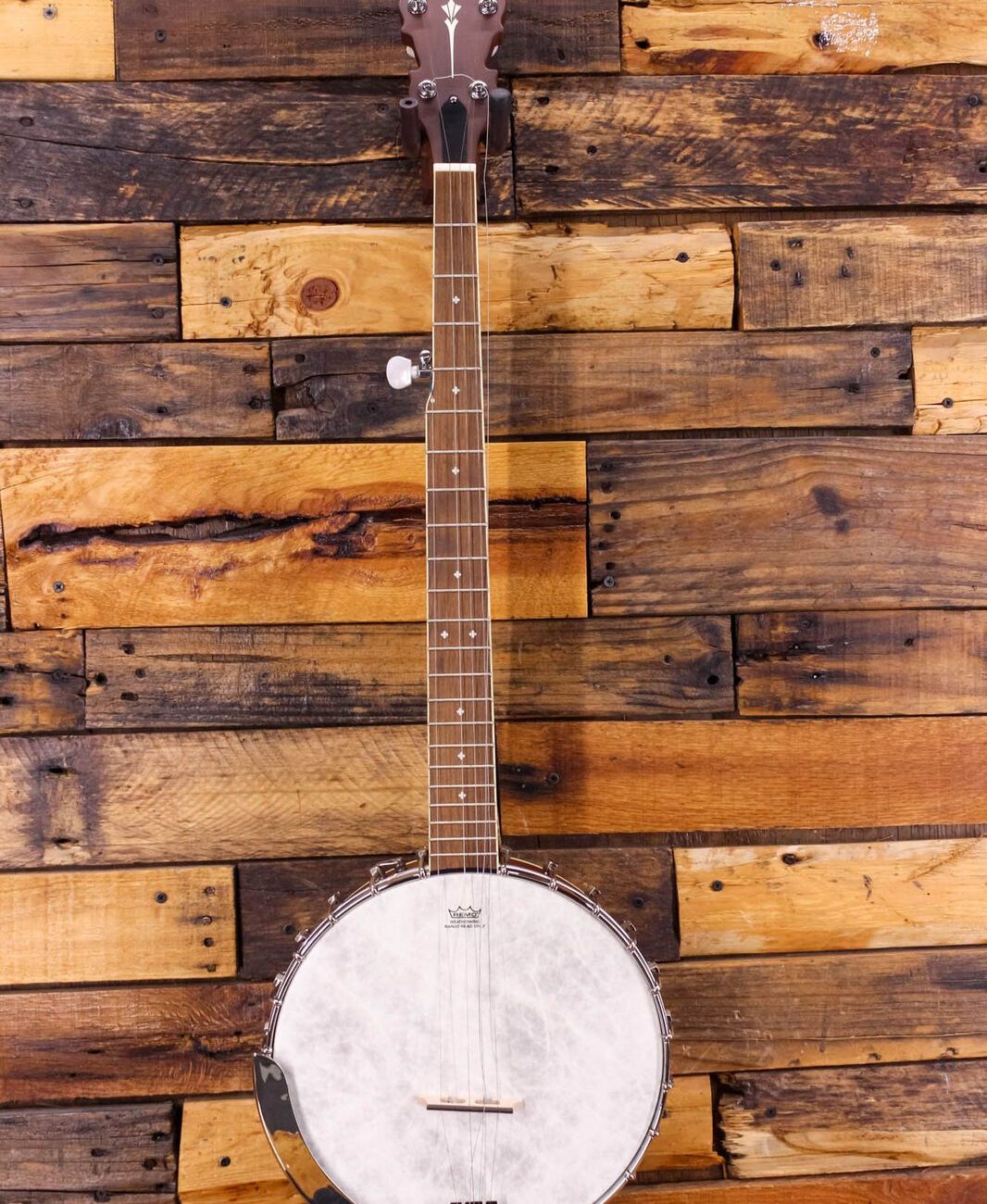
Fender PB-180E Banjo
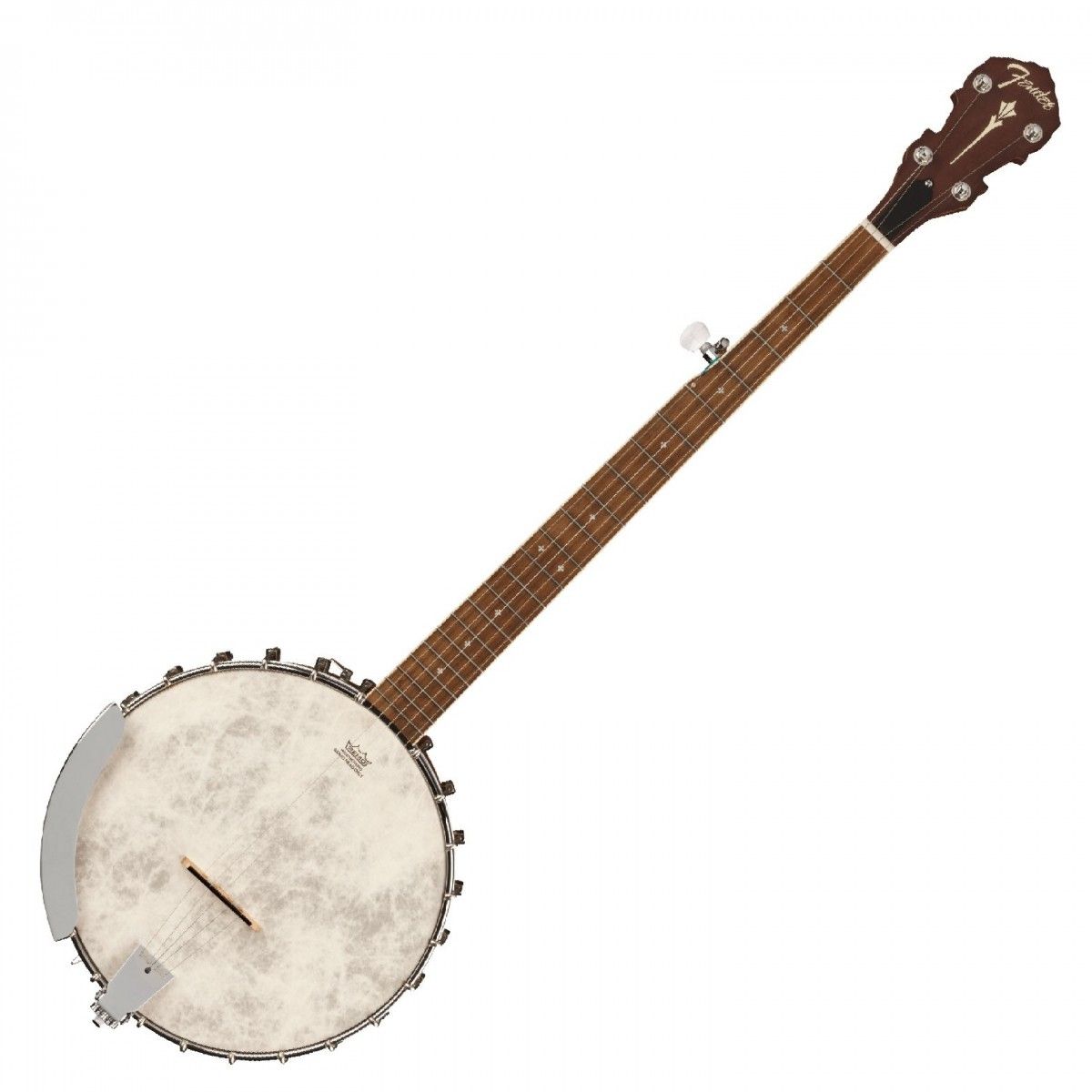
FEATURES: Laminated mahogany body and matte neck finish
OTHER INFO: Immaculately built with nickel plated hardware
- Open back banjo designed
- Quality construction and durable materials
- Built to handle even the most chaotic front-porch jams
- Require experienced setup for optimal playability
- The historic design may be too niche for some
When you click ‘Check Price’, you’ll see there are loads of great places to buy this item. Our personal favorite is Sweetwater for the US, and Thomann and Gear4Music for the UK & Europe.
They are the largest music retailers, with excellent customer service, competitive prices, really fast shipping, and the longest guarantees.
The professional musician who wrote this article combined many things,
from the product build, manufacturer’s reputation through to feedback
from other users, to create our famous TedScore™.
Deering
The Deering is a name and reputation that resonates with enthusiasts everywhere.
I enjoy playing my Deering banjo due to its excellent craftsmanship, rich and resonant tone, and easy playability.
The attention to detail in the construction and high-quality materials make it a pleasure to play, and the instrument’s adaptability allows me to experiment with many musical styles easily.
Overall, my experience with my Deering banjo has been fantastic and has become an essential part of my musical journey.
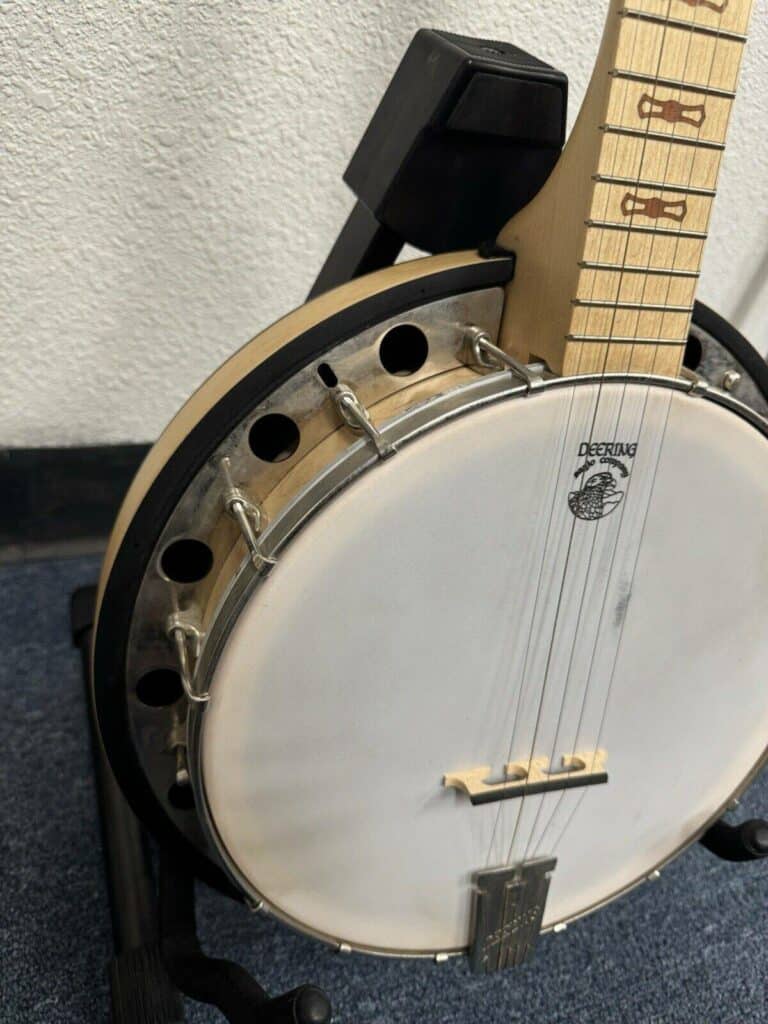
Deering Goodtime Banjo
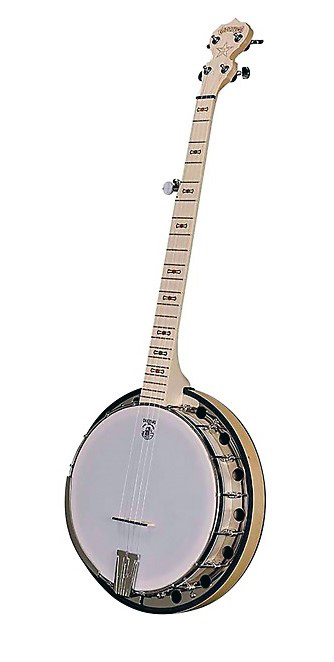
FEATURES: Designed with slender neck and a 22-fret fingerboard
OTHER INFO: Meticulously crafted with maple resonator and a steel rim
- Constructed with durable materials for long-term reliability
- Boast clear tones and superb playability
- Ideal for folk, bluegrass, and old-time music styles
- Higher price point compared to some other banjo brands
- Limited availability of certain models in some regions
- Some players may prefer a different neck profile
When you click ‘Check Price’, you’ll see there are loads of great places to buy this item. Our personal favorite is Sweetwater for the US, and Thomann and Gear4Music for the UK & Europe.
They are the largest music retailers, with excellent customer service, competitive prices, really fast shipping, and the longest guarantees.
The professional musician who wrote this article combined many things,
from the product build, manufacturer’s reputation through to feedback
from other users, to create our famous TedScore™.
5 String Banjo Chords
Crucial Points
Now that you know how chords are essential for banjo playing, especially in the bright and cheerful ‘open G’ tuning, with the major, minor, and even those tricky seventh chords, which can add a sparkle to our tunes.
Mastering these shapes isn’t just about following dots on a chart. It’s about moving our hands quickly across the strings, creating melodies that can lift spirits.
Remember, practice may not make perfect, but it does help us improve – and isn’t that a lovely thought? I’m thrilled knowing that with every strum and pluck, we’re on our way to becoming banjo experts.
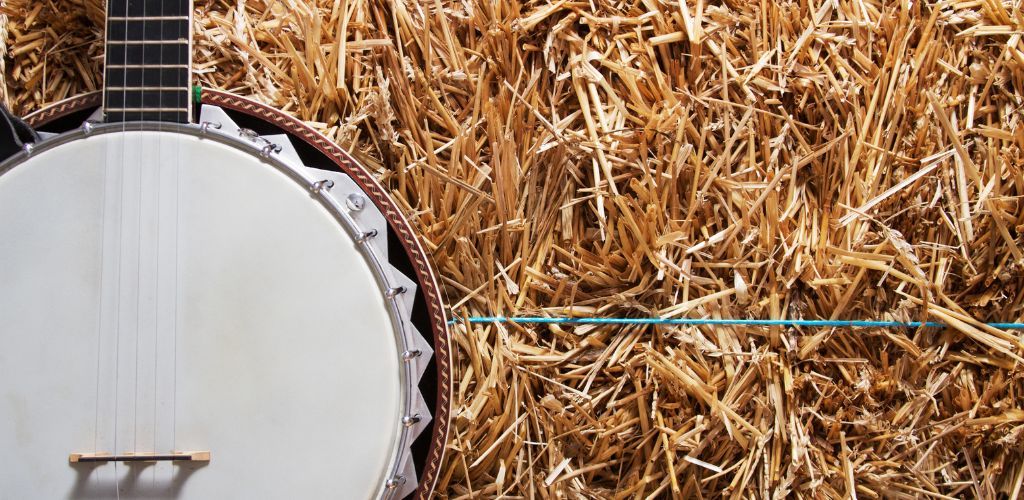
And don’t worry if it all feels overwhelming; we’ve all been there.
Just take it one chord at a time, and before you know it, those strings will be humming under your fingers as naturally as chatting with an old friend.
So, keep strumming, smiling, and, most importantly, enjoying every moment of your banjo adventure!
Before you go…
Get ready to pluck and strum your way to musical bliss with this comprehensive guide on the Best Brand of Banjo!
FAQ's
Commonly used chords on a 5-string banjo include G, C, D, and E minor, among others. These chords are often used in various styles of banjo music, such as bluegrass and folk.
The four basic banjo chords are G, C, D, and E minor. These chords are fundamental in playing a wide range of songs and are commonly used in various styles of banjo music.
Strumming is a common technique used to play the 5-string banjo, particularly in styles such as folk and bluegrass. However, the banjo can also be played using other techniques such as fingerpicking and rolls, which are integral to the unique sound of the instrument.










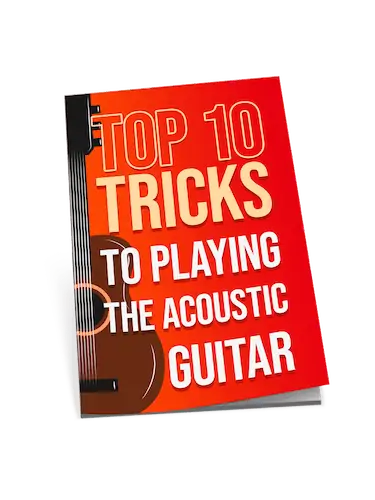
While it’s clear that brands like Gold Tone, Fender, and Deering make some of the best banjos out there, it’s important to note that the perfect instrument really depends on the player’s specific needs and music style. Each of these brands brings something unique to the table. For example, Deering is known for its bright, crisp sound which is great for bluegrass, while Fender might suit someone looking for a more rock-oriented tone. It’d be interesting to see this article delve deeper into how each brand’s characteristics match up with different playing styles.
Great point, Tim32! It’s all about the right fit for your music style. Had good experiences with a Fender myself for some folk tunes.
Tim32, any recommendations for a banjo under $500? Looking for something versatile.
If playing banjo was a sport, I’d be in the leagues! But honestly, where’s the love for folk tunes in your article, Lewis Turner? Can’t forget those roots.
I’ve recently taken an interest in the banjo and this guide seems like a great starting point. The breakdown between major and minor chords, as well as the detailed discussion on playing in different keys, will be incredibly helpful. I’m looking forward to trying out some of the techniques described here. Also, the emphasis on the importance of mastering basic fingering techniques before moving onto more complex styles is greatly appreciated.
Hey Lewis Turner, love the piece! Just wondering, do you think a total beginner like me could start with the Scruggs style, or should I get the basics down first?
SallyB, absolutely start with the basics. It’ll make learning Scruggs style so much easier down the line. Happy plucking!